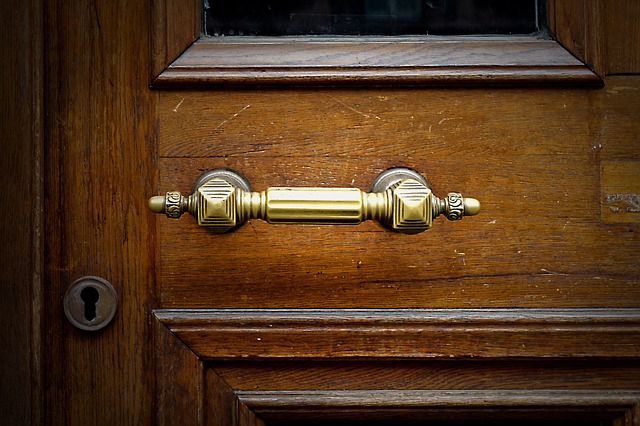Energy-efficient doors, made from materials like fiberglass and vinyl with multiple insulation layers, reduce heating/cooling costs by preventing drafts and minimizing heat transfer through advanced sealing systems. Key factors for selection include climate compatibility, door material, glass technology, fit & sealing (R-value), and proper installation techniques like weatherstripping, caulking, regular maintenance, and professional installation to maximize energy savings and indoor comfort year-round.
Looking to slash your heating and cooling bills? Energy-efficient door replacements offer a simple, cost-effective way to dramatically improve your home’s energy efficiency. This comprehensive guide delves into the world of eco-friendly doors, covering everything from understanding the basics and exploring various types to reaping significant benefits and navigating installation best practices. Discover how an energy-efficient door replacement can transform your home and pocketbook.
Understanding Energy-Efficient Doors: The Basics
Energy-efficient doors are designed to minimize heat transfer, keeping your home comfortable while reducing heating and cooling costs. These doors use specialized materials, advanced sealing mechanisms, and insulating properties to create a barrier against the exterior elements. By understanding the basics of these door options, you can make informed decisions when considering an energy-efficient door replacement.
One key aspect is the door’s material. Options like fiberglass and vinyl are popular choices due to their superior insulation compared to traditional wood doors. Additionally, multiple layers of insulation within the door panel further enhance its energy efficiency. Sealing is another critical component; high-quality doors feature advanced sealing systems that create an airtight seal between the door and frame, preventing drafts and minimizing heat loss or gain.
Types of Energy-Efficient Door Replacements
When considering an energy-efficient door replacement, there are several options available that can significantly reduce heating and cooling costs. One popular choice is energy-efficient sliding doors, which offer excellent insulation and come in various styles, from modern glass panels to traditional wood designs. These doors use advanced sealing technologies to prevent air leaks, ensuring your home stays comfortable while minimizing energy usage.
Another effective option are double-paned or insulated doors. Unlike single-paned doors, these models feature two layers of glass with a layer of air or gas in between, providing superior insulation. They are particularly effective in extreme weather conditions and can greatly reduce the amount of heat lost during winter and kept inside during summer, leading to substantial savings on energy bills.
Benefits of Upgrading to Energy-Efficient Doors
Upgrading to energy-efficient doors offers a plethora of advantages for homeowners seeking to reduce their heating and cooling costs. One of the key benefits is improved insulation, as these doors are designed with advanced sealing mechanisms that create an airtight barrier, preventing hot or cold air from escaping during extreme weather conditions. This simple yet effective measure can lead to significant energy savings, reducing utility bills and carbon footprint simultaneously.
Moreover, modern energy-efficient door replacements often feature innovative materials and technologies that enhance their overall performance. They are crafted to withstand various climate conditions, ensuring optimal insulation year-round. Additionally, these doors contribute to a more comfortable indoor environment by maintaining consistent temperatures, resulting in less reliance on heating or cooling systems.
Factors to Consider When Choosing Energy-Efficient Doors
When considering energy-efficient door replacement, several factors come into play. Firstly, the climate in your region significantly impacts your choice; doors designed for colder climates may not offer adequate insulation in warmer areas. Additionally, the type of door (wooden, fiberglass, steel) and its construction quality are crucial for energy efficiency. Look for multi-paned glass with low-emissivity coatings that reflect heat back into the home during winter and keep it cool in summer.
Fit and sealing are other key considerations. Doors should fit snugly to prevent drafts and air leaks. Weatherstripping and door sweeps at the base and top of the door help create a tight seal, maintaining indoor temperature and reducing energy loss. It’s also essential to assess the door’s overall R-value (a measure of its insulation effectiveness) and choose doors with higher ratings for optimal energy efficiency.
Installation Tips for Optimal Energy Efficiency
When considering an energy-efficient door replacement, proper installation is key to maximizing its benefits. Ensure a tight seal around the door frame by using weatherstripping and caulking to prevent air leaks. The door should fit snugly, with no gaps, to avoid energy loss. Consider hiring professionals for the installation process to ensure precision and accuracy, as even minor misalignments can impact efficiency.
Additionally, take advantage of available features like adjustable hinges and storm strips. Adjusting hinges allows for better alignment, while storm strips provide extra protection against drafts and weather conditions. Regular maintenance, such as lubricating hinges and re-caulking when necessary, will also contribute to the door’s longevity and energy-saving performance.
Upgrading to energy-efficient door replacements is a smart investment that offers significant long-term savings on heating and cooling costs. By choosing the right doors for your climate and home, you can create a more comfortable living environment while reducing your carbon footprint. Remember to consider factors like material, insulation, and sealing for optimal energy efficiency. With proper installation, these doors will serve as an effective barrier against extreme temperatures, ensuring a quieter, more sustainable future for your home.
